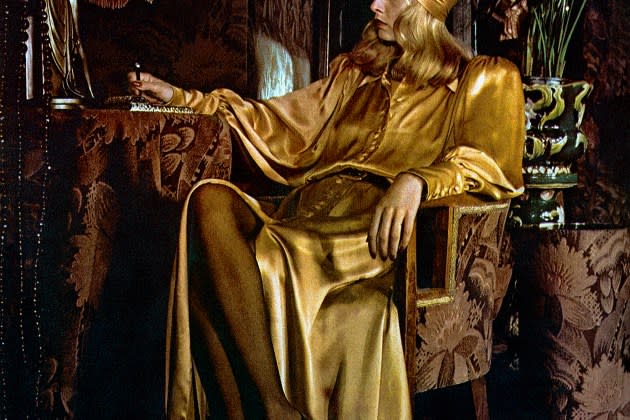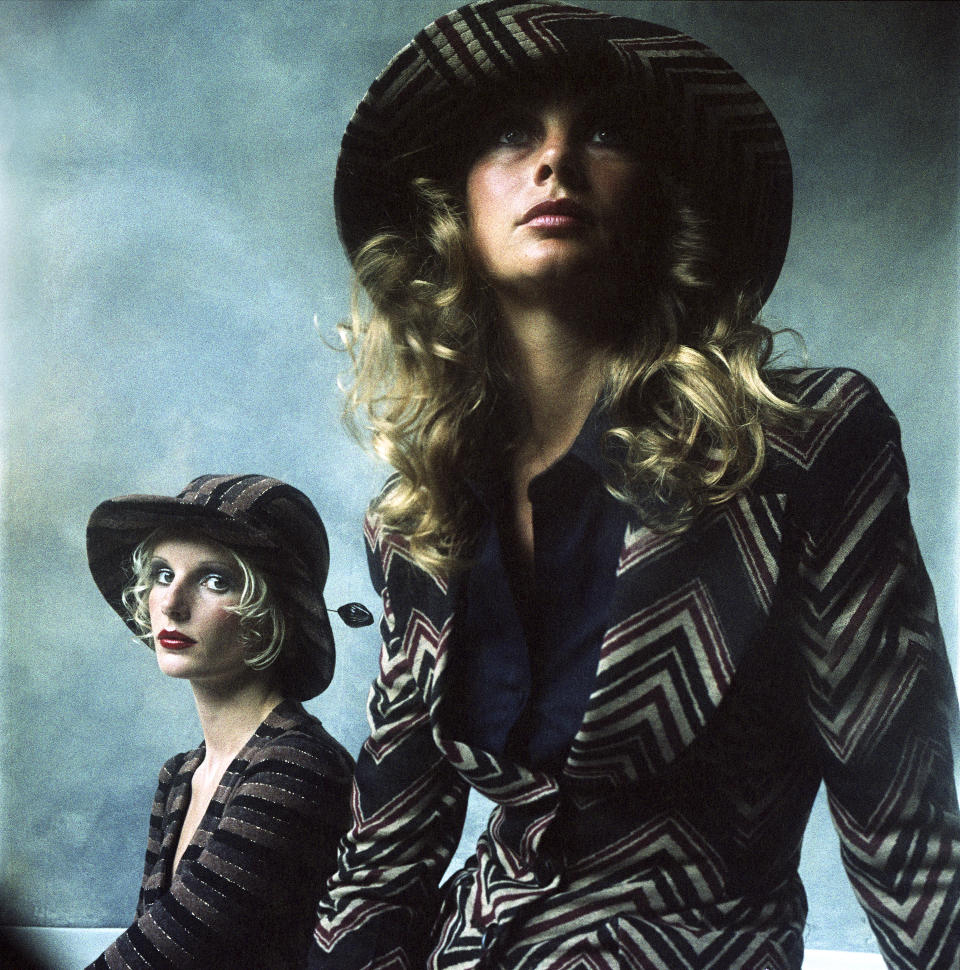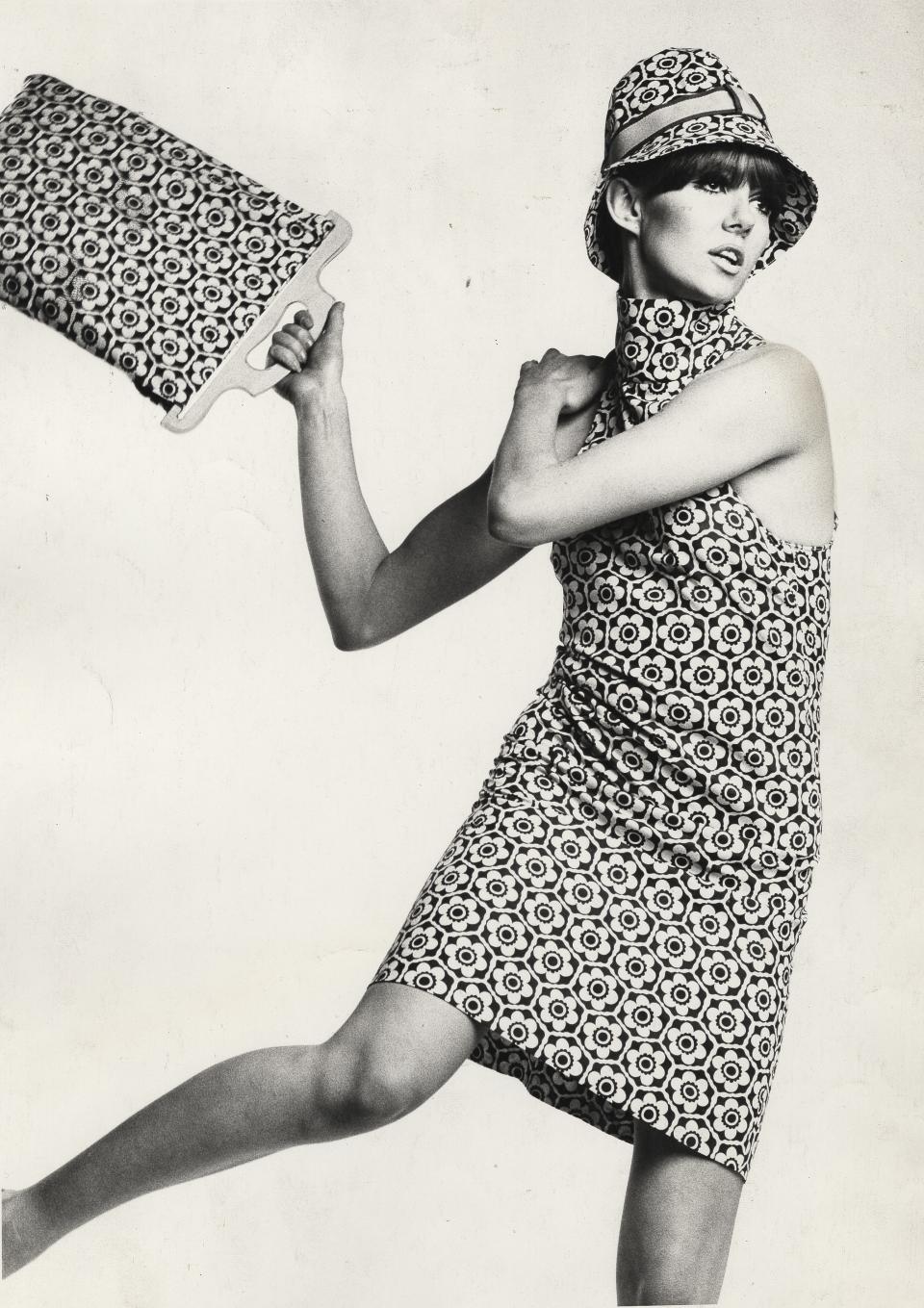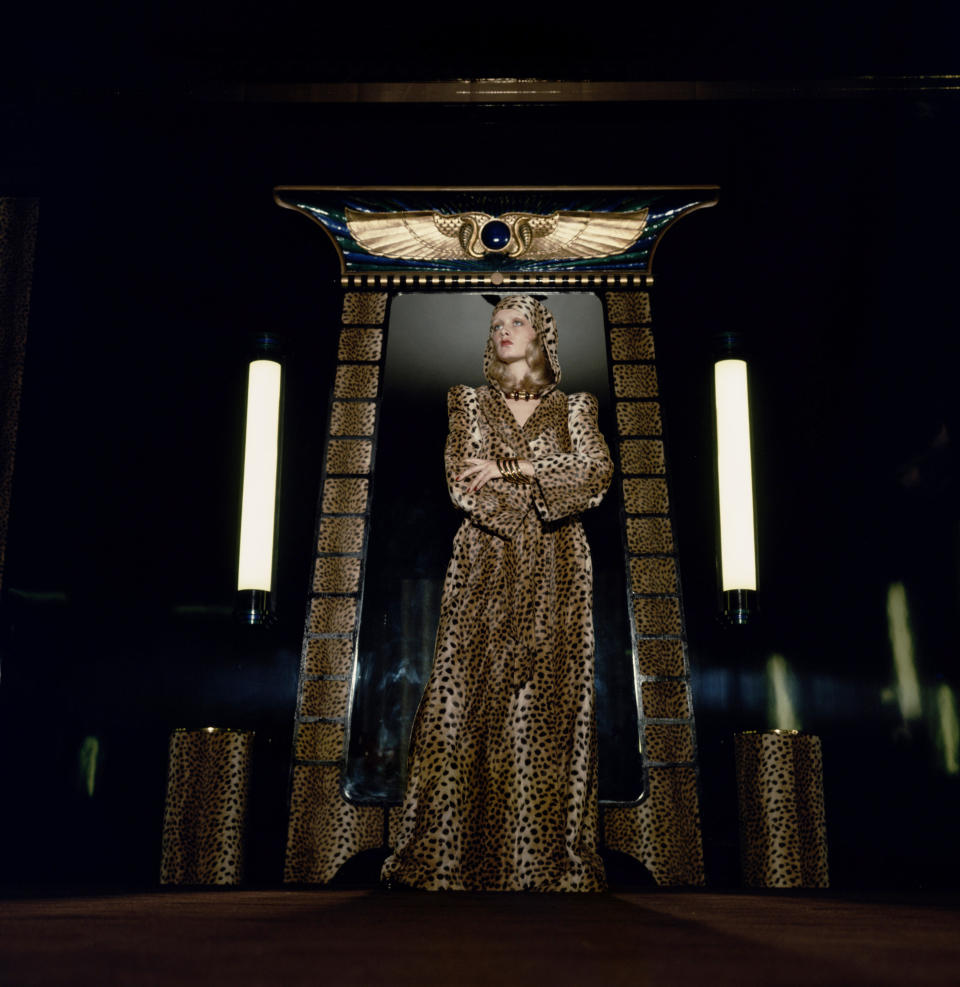New Exhibition on Ground-breaking London Store Biba Takes Center Stage at the City’s Fashion & Textile Museum

Some would argue that Britain is having a ’70s moment with high inflation, sluggish growth and widespread strike action — although today it’s doctors and rail workers, rather than coal miners, on the picket lines.
So it couldn’t be a better moment to stage an exhibition about Biba, the ground-breaking London boutique — and later department store — that had a democratic spirit and a customer base ranging from the royals and the Rolling Stones to teenagers looking to spend their pocket change.
More from WWD
On March 22, “The Biba Story: 1964-1975” will open at London’s Fashion and Textile Museum. It looks at the history of Biba in 40 outfits — 10 from each iteration of the London store — and draws on founder Barbara Hulanicki’s private archives, press books, correspondence and marketing material, as well as clothing loaned by private collectors.
Looks range from snappy shift dresses that Hulanicki designed in the ’60s, to the devoré wraps, leopard print coats and feather boas of the ’70s, when Biba became a lifestyle emporium, offering fashion, makeup, food and home furnishings.
The final store, on Kensington High Street, was seven stories high and known as Big Biba. It opened in 1973 and had a food hall, a 500-seat restaurant called the Rainbow Rooms where the New York Dolls once played, and the largest roof garden in Europe.

Jean Shrimpton and Barbara Miller wearing Biba, 1973.
“You could eat, sleep, and breathe Biba — inhabit the world. You never had to leave store,” says the curator Martin Pel, head of fashion and textiles at the Royal Pavilion & Museums in Brighton, England, who worked closely with Hulanicki on the show.
Customers did leave — eventually — but they kept coming back. They included Princess Anne, Twiggy, Brigitte Bardot, Julie Christie and Sonny and Cher. Mick Jagger was a fan of Biba style, and Keith Richards was even known to wear little Biba jackets onstage.
Pel has been occupied with Biba for a long time. In 2012 he curated “Biba and Beyond: Barbara Hulanicki” at Brighton’s Museum and Art Gallery. In 2014, he co-authored the book “The Biba Years 1963-1974,” with Hulanicki.
The exhibition, which runs until Sept. 8, marks the 60th anniversary of the first Biba shop, which Hulanicki founded with her husband, Stephen Fitz-Simon. It focuses on Biba’s 11 years in business and Hulanicki’s forward-thinking approach to retail.
Democracy — and inclusivity — were always top of mind, from the first full cosmetic range for Black skin to the ads for Biba in the nascent gay press (homosexuality was decriminalized in England in 1967) to the crèches (day nurseries) that Hulanicki set up for her mostly female staff, who were known as the “Biba girls.”
“The philosophy there was egalitarian, and the staff were 95 percent women. There were a couple of van drivers who were blokes, but that was it,” says Pel.
Hulanicki’s 360-degree approach stretched beyond the store, with Biba selling diaries that included recommendations for restaurants, night spots, places to visit and suggestions for how to live the “Biba” lifestyle.

At the heart of it all was fashion. Hulanicki had started her career as a fashion illustrator, working for publications including Women’s Wear Daily, Vogue and Tatler, and she began selling her stylish designs through catalogues, which will also be on display at the London show.
Images for Biba’s catalogues were shot by photographers including Helmut Newton and Sara Moon, while the graphics were distinctive. Hulanicki treated the catalogues like the fashion pages of a magazine, styling complete looks for her customers.
The clothes — in the catalogues and the stores — were not only covetable, they were cheap. Pel points out that, if Mary Quant’s prices hovered around 30 pounds, Biba’s were 3 pounds.
“School girls could go in, buy these amazing clothes, and feel transformed. They could walk down the street feeling like movie stars. That had never happened before, and that was Barbara’s intention,” he says.
Pel also talks about Biba’s famously skinny silhouette, with its tight sleeves and high armholes. “People would say you couldn’t really do anything when you were wearing Biba. You couldn’t even open a window,” he says.
Pel believes the slim lines came from Hulanicki’s background as a fashion illustrator. “She understood the impact of bold silhouettes without fussy details around the edges,” he says.
People were skinnier in those days, too. There was rationing in the U.K. from 1940 until 1954, meaning that 16-year-olds stepping through the door of the first, tiny Biba store on Abingdon Road in Kensington weren’t used to eating much.
Many of those skinny clothes were made in the U.K., at factories in London’s East End and with textiles sourced from the mills of northern England. Pel says Hulanicki used the best fabric she could afford, and that early Biba clothes didn’t even have labels as part of her efforts to keep costs down.
The show also traces the style evolution of Biba through the stores, which moved from Abingdon Road to Church Street and, finally, Kensington High Street, where the mood was a mix of Art Deco, Victoriana and Hollywood glam.

Although Hulanicki’s first big hit was a simple shift in pink gingham with a cutout back and matching headscarf, Biba eventually became synonymous with a more baroque style, and with saturated colors such as aubergine, rust and gold, which were considered unusual at the time.
Eye shadow and lipstick came in dark jewel tones, and full-on black.
The Big Biba store had a similar mystique. The windows were blacked out while the shopfit was created by stage set designers. Racks and shelves overflowed with pussy-bow blouses, piles of platform heels, and floppy hats. “It was retail as theater — and the vision of one woman,” says Pel.
Stephen Jones, who had worked with Pel on the “Stephen Jones Hats” exhibition at the Royal Pavilion in 2019, says that shopping at Big Biba was otherworldly — like stepping into a Theda Bara movie.
The milliner remembers visiting the shop with his elder sister and feeling overwhelmed. He was a young schoolboy then, and recalls seeing printed fabric shoes with giant toe bends.
“They were like Mickey Mouse’s shoes. Until then, I only knew school shoes — I didn’t know they could be different shapes,” says Jones, adding that when he returned to the store in later years, “I felt like the most sophisticated person on the planet.”
Hulanicki wanted everyone to feel that way.
In the exhibition catalogue, which is written by Pel and published by Yale University Press, there’s a quote from Hulanicki from 1970. In it, she says her aim was “to create a make-believe atmosphere. I think people just need somewhere to go, somewhere that is not ‘down to earth.’ They don’t have to buy, they just feel happier for it.”
Retail therapy, ahead of its time.
Best of WWD
Solve the daily Crossword

